
This collection is a mess. I’m ashamed of it. What have I done here that’s so bad? Well what I’ve done is this. I’ve mixed up what should be two separate entries – one by Dion & The Belmonts, one by Dion.
The problem, though, is this. There are 4 tracks here that I could not identify. They are: I Got The Blues, Runaway Girl, Teen Angel, and That’s My Desire. Google did not exist when I put this collection together. Now it does, so now I could do it. But I’m not doing it now. It’s done. And it’s a mess.
The name of the album that started this collection was
Everything You Always Wanted To Hear By Dion & The Belmonts But Couldn’t Get. It was obviously named in honour of the then famous David Reuben book, but anyway it wasn’t true. To begin with, only five of their 9 top 100 singles are on it.
More important, the album is a mix of tracks by Dion & The Belmonts, and by Dion, solo artist. And so that’s how my collection ended up a mess. I found the album at Kelly’s, which was a downtown record store, and not a very exciting one. Kelly’s was a small chain, meaning that they had more than one store, but this one was downtown, at the corner of Kennedy and Portage, the northeast corner.
It was a Polydor album, but it featured tracks that had originally been issued on Laurie Records, and there were others in the series, one I found later by The Chiffons, same title. Well obviously not the exact same title.
And if you look at Dion’s solo career, he had 16 Laurie singles in the top 100, 13 before he defected to Columbia, and of those 13, 10 are on the album. So much for truth in titling. And just for the record, Dion had 6 Columbia singles, 5 of which I have, and 1 on Warner Brothers, which I don’t have; that was in 1970, his last chart entry.
Some of these tracks came from a K-Tel album, and the Columbia tracks came from elsewhere, VA compilations and random singles. I also have King Of The Streets, a 3 CD collection by Dion, but some of the omissions on that (The Wanderer) are downright bizarre.
Dion & The Belmonts / Dion:
•
Runaround Sue – By Dion. He is foaming here, frothing if you will, expressing all the self-righteous anger of someone wronged in romance. Here’s my story, he says, it’s sad but true, about a girl that I once knew. And he procedes to eviscerate his former belle. And what is her sin? “Sue goes out with other guys.” Everything in perspective. The song reached number 1 in the fall of 1961.
•
The Wanderer – By Dion. I am not the first to point out that he brags here about doing the very things that he castigates Sue for doing in the previous song. “Two fists of iron,” he says, “but I’m going nowhere.” The way he runs from commitment, from love, from meaning, the bravado here is empty – going nowhere. From the winter of 1962.
•
The Majestic – By Dion, and the B side of The Wanderer. A dance song, from the winter of 1962. The way Dion sings about running from romance with any number of women, that’s how he sings about dancing. What’s interesting is that his performances, seen on YouTube for example, are rather staid. Maybe it was the junk he’d been on since the age of 16. Meanwhile, one can only imagine how one dances the majestic.
•
Love Came To Me – By Dion, from the winter of 1962 / 1963. That same spirit of bravado pervades this otherwise straight love song.
•
Little Diane – By Dion He is tortured by a woman he can’t live with and can’t live without. “I want to pack and leave and slap your face,” he sings, and one assumes that he will not do it in that order. “Diane” he calls her in the song, leaving one to wonder whether she is small in stature, very young, or a singer like Little Richard. Maybe the only record I know that features a kazoo solo. From the summer of 1962.
•
Lonely World – I wish I had someone to love, sings Dion in this tale of self-pity, released by Laurie Records in 1963 after Dion had moved to Columbia. It made it to number 101, bubbling under.
•
Lovers Who Wander – By Dion. A strange song, not unlike Runaround Sue, but here he has his vengeance – he’s found the place for lovers who wander. I’m not sure why he feels that that’s vengeance. Must be Lonesome Town. There are many songs by many a jilted lover, but few this bitter. From the summer of 1962.
•
(I Was) Born To Cry – By Dion, identified as Born To Cry on the LP cover. The B side of Lovers Who Wander. More anger here, this time about everything and anything. From the spring of 1962.
•
I Got The Blues – Dion & The Belmont, though I wouldn’t have thought so from the sound. Dion sings with his usual swagger, like he’s got the blues, and he dares anyone to say he hasn’t…
•
I Wonder Why – Back to the beginning, Dion & The Belmonts from the summer of 1958, their first hit. All the uncertainty and insecurity of love and romance expressed in a series of staccato na na na’s and Dion’s surprisingly sincere delivery. Great Italian-American-New York doo wop, a direction that the group didn’t really follow.
•
Teenager In Love – This would be cloying, as any self-referential teenager song is wont to be, if anyone else were doing it. The delivery here, though, is so innocent that it works perfectly. Dion & The Belmonts from the spring of 1959. I learned this song from a Sha Na Na album called
The Golden Age Of Rock And Roll.•
Where Or When – Rogers & Hart wrote this in 1937. There are dozens, maybe hundreds, of versions, but Dion & The Belmonts’ version was in the top 5 in the winter of 1960.
•
Runaway Girl – Another track that didn’t make the top 100, but this one doesn’t appear to have been a chart single at all, but based on the sound I’d say Dion solo, and I’d be right. It’s not to be confused with Runaway by Del Shannon, which stomps all over this one anyway.
•
Lonely Teenager – Dion first solo hit, in the winter of 1960 / 1961. The background vocal group on this is female, so he was obviously going for a different sound, though it didn’t take long for him to find his swagger.
•
When You Wish Upon A Star – Dion & The Belmonts, from the spring of 1960. They do a pretty straight version of this, they don’t rock it up or anything.
•
Teen Angel – This is a solo track by Dion, it turns out. It’s a syrupy ballad, but not to be confused with Teen Angel by Mark Dinning. The object of Dion’s affection is very much alive, though Dion barely is, judging by his performance. Donovan also did a song called Teen Angel.
•
A Lover’s Prayer – Dion & The Belmonts, from the fall of 1959. The other side of this was called Every Little Thing I Do, and it made the chart at the same time.
•
That’s My Desire – Another one that didn’t make the charts, but I know it’s Dion & The Belmonts because a. it is very much a group vocal and b. I looked up the song on Wikipedia. It was written in 1931 by no one I’ve ever heard of. It was a bit hit for Frankie Laine in 1946. This version is apparently from 1960.
•
Sandy – Dion. Another hard luck Sue-like tale. From the spring of 1963. Not the Larry Hall song, nor the Ronny & The Daytonas song, nor the Bruce Springsteen / Hollies song.
•
No One Knows – Another sad song about an old flame. Dion & The Belmonts from the fall of 1958.
•
Havin’ Fun – Dion in the winter of 1961. He’s not the one having fun, it’s his girl, no surprise. This is tame, compared to his usual fare, though it does have a just-you-wait aspect to it.
•
Don’t Pity Me – Not the Peter & Gordon song. A Belmonts hit from the winter of 1959, though the group is very subdued on this.
•
In The Still Of The Night – The Cole Porter song, written in 1937. In other words, not I’ll Remember (In The Still Of The Night) by The Five Satins. The Belmonts from the summer of 1960, their last hit. They do it very straight.
•
This Little Girl – This was Dion on Columbia, his follow up to Ruby Baby. This style is very much in the Runaround Sue mold, toned down a bit. The sentiment expressed is misogyny personified, a kind of Under My Thumb prototype. From the spring of 1963.
•
Be Careful Of Stones That You Throw – A people in glass houses morality tale. Very silly. This is Dion from the summer of 1963.
•
Ruby Baby – By Leiber & Stoller, a hit for The Drifters on the R & B charts in the 50s. Finally Dion gets something he can wrap his voice around. From the winter of 1963. Ronnie Hawkins did a good version. These Columbia recordings by Dion, by the way, were Columbia's first foray into the world of rock and roll.
•
Drip Drop – Another Drifters’ hit, from 1958, also by Leiber & Stoller. Same style as Ruby Baby, funkier if anything. From the winter of 1963 / 1964.
•
Donna The Prima Donna – Dion from the fall of 1963. This is the Dion song that I heard occasionally as a “flashback” growing up. More self-righteousness, this time about a stuck up girl and sour grapes. Dion in this mood was a wonder to hear.
•
Purple Haze – For his follow up to Abraham, Martin And John, Dion took Hendrix’s signature song, slowed it down, I mean really slowed it down, and put it out as a single, The song spent 4 weeks in the top 100 in the winter of 1969, maxing out at number 63. All the momentum that he’d created just went poof! There’s some nice flute on it, though.
•
Abraham, Martin And John – I’m old enough to remember the assassinations of all the heroes of this song (well, not Abraham Lincoln), though I don’t specifically remember King’s. I was only 6 when JFK died, but I remember Bobby, and it saddened me. I was 11, but the American election process was up front and centre, even up here north of the border. I was in grade 5, and we listened to the radio to hear what was happening. And I remember the first time I heard this record; it was at 11:45 at night, on CKRC, our local top 40 station, and at that time every night the DJ would play a special selection of 3 profound songs, and that night he introduced this, and the funny thing is that I didn’t get it for a long time, who Abraham, Martin and John were. Was I a dumb kid? A little slow maybe.
There is a YouTube video of Dion doing this on stage, solo, accompanying himself on acoustic guitar, and it doesn’t work. The truth is that the song isn’t all that great, covers my Smokey Robinson & The Miracles and by Moms Mabley are underwhelming. But the Dion record is all about context; they surround the singer with such a beautiful arrangement (the oboe off the top is ingenius), which Dion matches with a vocal that never become saccharine, that the whole thing becomes a perfect example of musical synergy, the sum being so much more that the parts. Let the pundits say what they will; this is one beautiful record. From the fall of 1968. The song, by the way, was written by Dick Holler, who also wrote Snoopy And The Red Baron for The Royal Guardsmen.
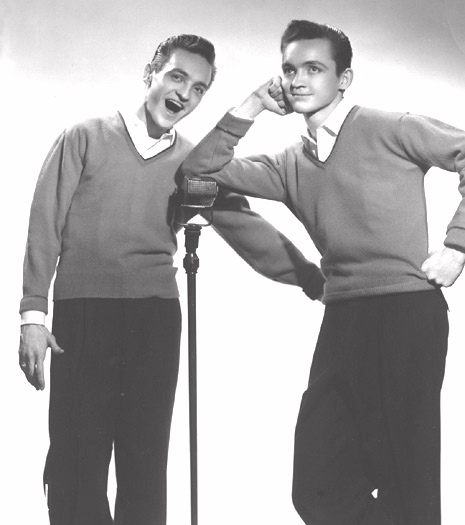 Boys, Herbie and Hal. I can’t imagine where Three O’Clock Thrill comes from, it wasn’t a hit or anything. I can’t remember where the other one comes from either, but at least it makes sense here.
Boys, Herbie and Hal. I can’t imagine where Three O’Clock Thrill comes from, it wasn’t a hit or anything. I can’t remember where the other one comes from either, but at least it makes sense here. Jody Reynolds, who was male, popped into the top 100 twice in 1958, his first record reaching number 5, his second reaching number 66. Then he disappeared forever…
Jody Reynolds, who was male, popped into the top 100 twice in 1958, his first record reaching number 5, his second reaching number 66. Then he disappeared forever… Sheb Wooley had quite the career as an actor and comedian, besides 4 top 100 hits between 1955 and 1962, and besides 5 more top 100 singles as Ben Colder between 1962 and 1966. All I’ve ever known of him, though, was his one big success, the “one eyed one-horned flying purple people eater,” which I used hear on the radio periodically as an oldie. I got it myself from a K-Tel album called Goofy Greats.
Sheb Wooley had quite the career as an actor and comedian, besides 4 top 100 hits between 1955 and 1962, and besides 5 more top 100 singles as Ben Colder between 1962 and 1966. All I’ve ever known of him, though, was his one big success, the “one eyed one-horned flying purple people eater,” which I used hear on the radio periodically as an oldie. I got it myself from a K-Tel album called Goofy Greats.
 Bobby Freeman, who wrote and recorded Do You Want To Dance, did more for rock and roll dancing than all the Chubby Checker records combined. He put 9 hits into the top 100 between 1958 and 1964. I have 3, one of which came from the American Graffiti soundtrack, one of which came right off the single, and one of which came from a K-Tel LP.
Bobby Freeman, who wrote and recorded Do You Want To Dance, did more for rock and roll dancing than all the Chubby Checker records combined. He put 9 hits into the top 100 between 1958 and 1964. I have 3, one of which came from the American Graffiti soundtrack, one of which came right off the single, and one of which came from a K-Tel LP.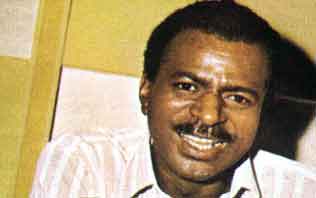 His big moment in the sun was not the 2 hits he snuck into the charts in 1958; it was his appearance as co-writer and producer of Let’s Get It On By Marvin Gaye.
His big moment in the sun was not the 2 hits he snuck into the charts in 1958; it was his appearance as co-writer and producer of Let’s Get It On By Marvin Gaye. The original Sonny & Cher? Well, they were married, and to each other to boot. They only ever had one hit, and I got it straight from the single.
The original Sonny & Cher? Well, they were married, and to each other to boot. They only ever had one hit, and I got it straight from the single. He made straight comedy records under his real name, Ross Bagdasarian, but as David Seville he created the nexus between rock and roll and cartoons, and he did it with speed.
He made straight comedy records under his real name, Ross Bagdasarian, but as David Seville he created the nexus between rock and roll and cartoons, and he did it with speed. Her entire top 40 collection is here. Besides that she had 2 more hits on the top 100.
Her entire top 40 collection is here. Besides that she had 2 more hits on the top 100. Here is the truth. Jack Scott, whom most people have never heard of, is noted in Whitburn’s Top Pop Artists & Singles 1955 – 1978 as “one of Pop music’s all-time most popular singers.” (The capitalization of “pop” is his, not mine.) I don’t know what qualifies him for the distinction, given that, as I say, few people know who he is.
Here is the truth. Jack Scott, whom most people have never heard of, is noted in Whitburn’s Top Pop Artists & Singles 1955 – 1978 as “one of Pop music’s all-time most popular singers.” (The capitalization of “pop” is his, not mine.) I don’t know what qualifies him for the distinction, given that, as I say, few people know who he is.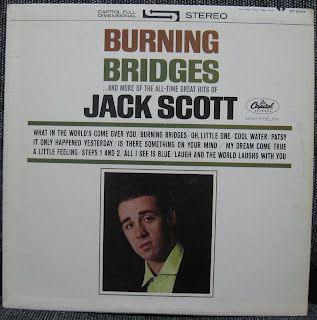 Originally by Sons Of The Pioneers, also done by Marty Robbins.
Originally by Sons Of The Pioneers, also done by Marty Robbins.
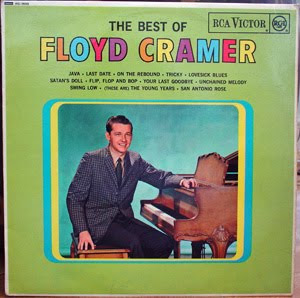 I didn’t take piano lessons. My sisters did; I didn’t. I took guitar lessons, but I didn’t get very far. But piano, I wonder. I wonder how difficult it is to do what Floyd Cramer does. The songs, one could learn. The style, not hardly likely…
I didn’t take piano lessons. My sisters did; I didn’t. I took guitar lessons, but I didn’t get very far. But piano, I wonder. I wonder how difficult it is to do what Floyd Cramer does. The songs, one could learn. The style, not hardly likely… I grew up with I Can’t Stop Loving You by Ray Charles as a fact of life. Oh Lonesome Me entered my life when I heard Neil Young sing it on the radio in 1970, and Sea Of Heartbreak came about 8 years later, when I picked up a collection by The Searchers. And I discovered Sweet Dreams when I discovered Patsy Cline.
I grew up with I Can’t Stop Loving You by Ray Charles as a fact of life. Oh Lonesome Me entered my life when I heard Neil Young sing it on the radio in 1970, and Sea Of Heartbreak came about 8 years later, when I picked up a collection by The Searchers. And I discovered Sweet Dreams when I discovered Patsy Cline. Odd that a group would call itself The Monotones, and a harmony group to boot. They were not, though, monotone. Of course they weren’t. They had one hit, and that makes them a one hit wonder, and I found that one hit, like so many others, on Echoes Of A Rock Era. Who knows where my life would be if I hadn’t found those 2 obscure volumes.
Odd that a group would call itself The Monotones, and a harmony group to boot. They were not, though, monotone. Of course they weren’t. They had one hit, and that makes them a one hit wonder, and I found that one hit, like so many others, on Echoes Of A Rock Era. Who knows where my life would be if I hadn’t found those 2 obscure volumes. Lou Monte was a comedian. That’s what he was, a comedian. And comedians make records. Most comedians made LPs with jokes and routines on them. Bill Cosby did that. Bob Newhart did that. Ross Bagdasarian did that.
Lou Monte was a comedian. That’s what he was, a comedian. And comedians make records. Most comedians made LPs with jokes and routines on them. Bill Cosby did that. Bob Newhart did that. Ross Bagdasarian did that. Dippy looking kid.
Dippy looking kid. This takes me back to about 1983, when I discovered Pyramid Records, and they still carried a very limited selection of new LPs, imports generally, some Rhino, and some Charly, including this LP, called Rock ‘N’ Roll Rumble, a collection of tracks by Link Wray & The Raymen. It was called Rumble on the record label. I suppose now you could order something like this on Amazon, and that, of course, takes all the fun out of it.
This takes me back to about 1983, when I discovered Pyramid Records, and they still carried a very limited selection of new LPs, imports generally, some Rhino, and some Charly, including this LP, called Rock ‘N’ Roll Rumble, a collection of tracks by Link Wray & The Raymen. It was called Rumble on the record label. I suppose now you could order something like this on Amazon, and that, of course, takes all the fun out of it. This collection is a mess. I’m ashamed of it. What have I done here that’s so bad? Well what I’ve done is this. I’ve mixed up what should be two separate entries – one by Dion & The Belmonts, one by Dion.
This collection is a mess. I’m ashamed of it. What have I done here that’s so bad? Well what I’ve done is this. I’ve mixed up what should be two separate entries – one by Dion & The Belmonts, one by Dion.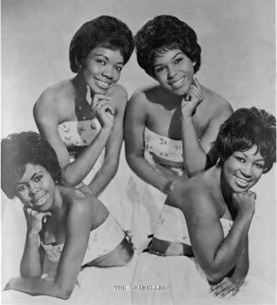 I didn’t know The Shirelles much, if at all, before picking up an album called 16 Greatest Hits in that magic section of Country Music Centre which was labeled “50s and 60s.” The LP actually had 13 hits on it, plus a remake of I Met Him On A Sunday (the original was on Decca, the reissues were all from Scepter), plus Boys, plus What Is Love. A few years later I picked up Juke Box Giants, the Shirelles edition, and I filled in some more songs, and Sha La La came from somewhere else, and so did the Decca tracks, which are the first 2 here.
I didn’t know The Shirelles much, if at all, before picking up an album called 16 Greatest Hits in that magic section of Country Music Centre which was labeled “50s and 60s.” The LP actually had 13 hits on it, plus a remake of I Met Him On A Sunday (the original was on Decca, the reissues were all from Scepter), plus Boys, plus What Is Love. A few years later I picked up Juke Box Giants, the Shirelles edition, and I filled in some more songs, and Sha La La came from somewhere else, and so did the Decca tracks, which are the first 2 here. • Blue Holiday – Like other things in life, holidays happen, and they are not always good, even though they are meant to be.
• Blue Holiday – Like other things in life, holidays happen, and they are not always good, even though they are meant to be.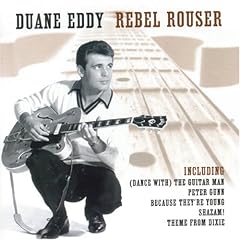 I had 2 Duane Eddy albums and a few singles. Some of the singles came from Sound Exchange. Pepe, Peter Gunn, Yep! all came from 45s. One of the albums was $1,000,000 Worth Of Twang, an old collection on Jamie, and I got an old copy, an old beat up copy, picked it up at Pyramid Records like so many others.
I had 2 Duane Eddy albums and a few singles. Some of the singles came from Sound Exchange. Pepe, Peter Gunn, Yep! all came from 45s. One of the albums was $1,000,000 Worth Of Twang, an old collection on Jamie, and I got an old copy, an old beat up copy, picked it up at Pyramid Records like so many others.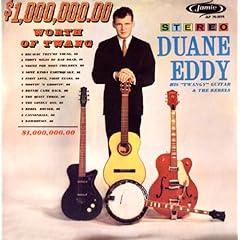 winter of 1959.
winter of 1959. Frankie Avalon was one of the Bobbies: Bobby Vee, Bobby Rydell, Bobby Curtola, Bobby Vinton, Bobby Sherman. His name wasn’t Bobby, but he was one of the Bobbies nonetheless.
Frankie Avalon was one of the Bobbies: Bobby Vee, Bobby Rydell, Bobby Curtola, Bobby Vinton, Bobby Sherman. His name wasn’t Bobby, but he was one of the Bobbies nonetheless.
 Somebody created a
Somebody created a  e cover, I do remember that. I picked more songs though, many on old scratchy 45s, most, if not all, at Pyramid Records, of which I’ve written previously, and from The Very Best Of Connie Francis, which had 11 that were not on that first LP that I had, the one with the ugly cover. That’s it. The story of Connie Francis.
e cover, I do remember that. I picked more songs though, many on old scratchy 45s, most, if not all, at Pyramid Records, of which I’ve written previously, and from The Very Best Of Connie Francis, which had 11 that were not on that first LP that I had, the one with the ugly cover. That’s it. The story of Connie Francis. everything together, even the breakup. From the summer of 1961.
everything together, even the breakup. From the summer of 1961.
